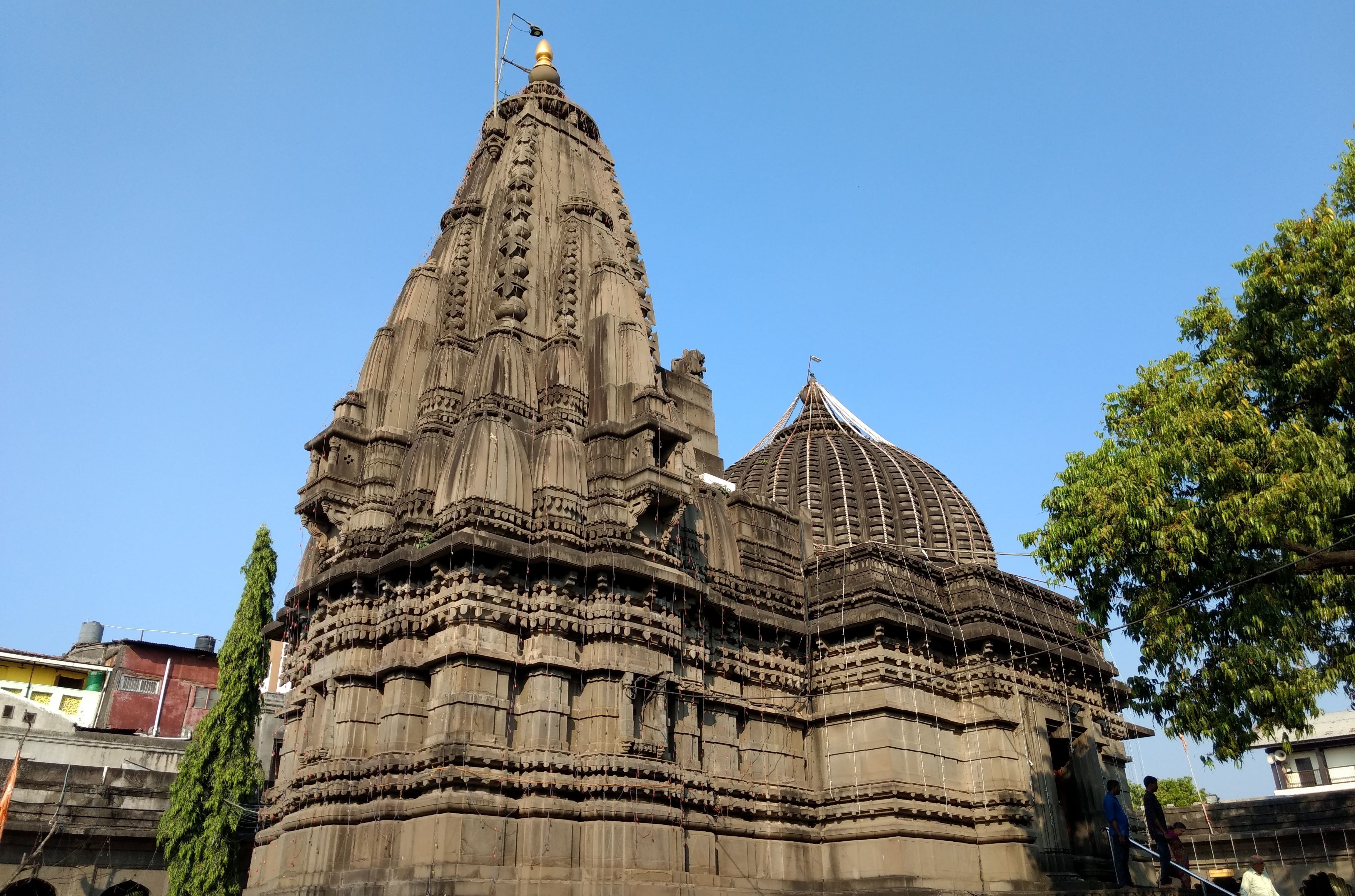Kalaram Temple on:
[Wikipedia]
[Google]
[Amazon]

 The Kalaram Temple is an old
The Kalaram Temple is an old

 The Kalaram Temple is an old
The Kalaram Temple is an old Hindu
Hindus (; ) are people who religiously adhere to Hinduism. Jeffery D. Long (2007), A Vision for Hinduism, IB Tauris, , pages 35–37 Historically, the term has also been used as a geographical, cultural, and later religious identifier for ...
shrine dedicated to Rama
Rama (; ), Ram, Raman or Ramar, also known as Ramachandra (; , ), is a major deity in Hinduism. He is the seventh and one of the most popular '' avatars'' of Vishnu. In Rama-centric traditions of Hinduism, he is considered the Supreme Bein ...
in the Panchavati area of Nashik
Nashik (, Marathi: aːʃik, also called as Nasik ) is a city in the northern region of the Indian state of Maharashtra. Situated on the banks of river Godavari, Nashik is the third largest city in Maharashtra, after Mumbai and Pune. Nashi ...
city in Maharashtra, India
Maharashtra (; , abbr. MH or Maha) is a state in the western peninsular region of India occupying a substantial portion of the Deccan Plateau. Maharashtra is the second-most populous state in India and the second-most populous country subdivi ...
.
The temple derives its name from a black statue of Lord Rama. The literal translation of ''kalaram'' is "black Rama". The sanctum sanctorum also houses the statues of the goddess Sita
Sita (; ) also called as Janaki and Vaidehi is a Hindu goddess and the female protagonist of the Hindu epic, ''Ramayana''. She is the consort of Rama, the avatar of the god Vishnu, and is regarded as a form of Vishnu's consort, Lakshmi. She ...
and the god Lakshmana
Lakshmana ( sa, लक्ष्मण, lit=the fortunate one, translit=Lakṣmaṇa), also spelled as Laxmana, is the younger brother of Rama and his loyalist in the Hindu epic ''Ramayana''. He bears the epithets of Saumitra () and Ramanuja () ...
. Thousands of devotees visit it every day.
History
The original temple of Lord Rama was very old, estimated to be of the Rashtrakuta Period from 7th to 11th centuries. However, antiquity of the Rama idol threw light on the fact that it was more than 2000 years old. The original temple was destroyed by Muslim rulers and it remained in demolished condition. However, during the first Islamic attack on the Temple, the idol of Lord was thrown in the Godavari River by the Temple Brahmins in order to save it. The new temple was funded by Sardar Rangarao Odhekar, and was rebuilt around 1788. Once, Odhekar had a dream that the statue of Rama in black colour was in the Godavari River.He carried out expedition of reviving the idol and miraculously got it. Odhekar took the statue from river and built the temple. Odhekar's expedition is an important part of Nashik's history. There is a statue of Sardar Odhekar in the temple. According to ancient epic of theRamayana
The ''Rāmāyana'' (; sa, रामायणम्, ) is a Sanskrit literature, Sanskrit Indian epic poetry, epic composed over a period of nearly a millennium, with scholars' estimates for the earliest stage of the text ranging from the 8th ...
, Lord Rama was sent in exile for fourteen years. After the tenth year of exile, Lord Rama along with Lakshman and Seeta, lived for two and half years on the northern bank of the Godavari
The Godavari (IAST: ''Godāvarī'' �od̪aːʋəɾiː is India's second longest river after the Ganga river and drains into the third largest basin in India, covering about 10% of India's total geographical area. Its source is in Trimbakeshwa ...
near Nasik. This place is known as Panchavati.
The temple formed a pivotal role in the Dalit
Dalit (from sa, दलित, dalita meaning "broken/scattered"), also previously known as untouchable, is the lowest stratum of the castes in India. Dalits were excluded from the four-fold varna system of Hinduism and were seen as forming ...
movement in India. B. R. Ambedkar
Bhimrao Ramji Ambedkar (14 April 1891 – 6 December 1956) was an Indian jurist, economist, social reformer and political leader who headed the committee drafting the Constitution of India from the Constituent Assembly debates, served ...
led a protest outside the temple on 2 March 1930, in order to allow Dalits into the temple.
Temple complex
1) The main entrance has a LordHanuman
Hanuman (; sa, हनुमान, ), also called Anjaneya (), is a Hindu god and a divine '' vanara'' companion of the god Rama. Hanuman is one of the central characters of the Hindu epic ''Ramayana''. He is an ardent devotee of Rama and on ...
deity which is black. There is also a very old tree that has Lord Dattatreya's footprint impressions marked on a stone. Pilgrims visit the Kapaleshwar Mahadev temple near the Kalaram Temple.
2) Lord Hanuman's temple is designed in such a way that, Lord Ram's idol can be visible from Lord Hanuman's idol.
3) Main temple of Ram has 14 steps, which represents 14 years of Ram's exile.
4) Also, the temple has 84 pillars, which represents cycle of 84 lakh species one has to go in order to get Human birth.
References
External links
* Hindu pilgrimage sites in India 18th-century Hindu temples Hindu temples in Maharashtra Tourist attractions in Nashik Rama temples Buildings and structures in Nashik {{india-hindu-temple-stub